We all must have experienced some anxiety in our lives already. It’s a normal thing to have occasionally. It’s just not always as nice as it might interrupt your day-to-day life.
Luckily, with yoga we can do something about this!
We won’t only be looking at a couple of Asanas for you to try out, but we’ll also have a look at some breathing exercises.
When you are experiencing anxiety, chances are that your heart rate went up a little. This alone can already be resolved by focusing on your breath.
No worries, we’ll really take a closer look at a great pranayama technique to balance your mind and body again.
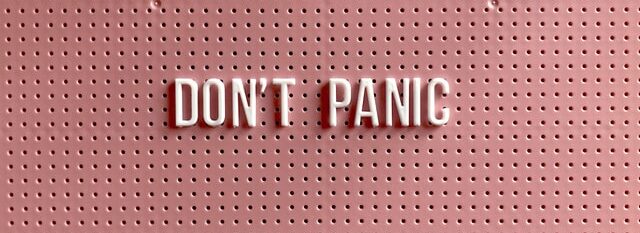
Yoga To Relieve Anxiety
There are multiple reasons why it is possible to reduce your anxiety symptoms by doing yoga. The main one is that it just relaxes your mind and body.
Yeah, there are many more reasons that are really digging deeper into the whole philosophy of yoga.
You are here though to have a look at some yoga poses I assume, so if you’d like to know more about this subject, please leave a comment down below and I’ll gladly give you some extra explanation!
#1 Tree Pose
Vrksasana or Tree Pose is amazing to do to relieve your anxiety.
This is of course when you aren’t totally petrified by fear.
Let’s just assume and hope it hasn’t gone that far just yet.
This asana is great for those who miss a bit of grounding in their life. I often do or recommend this position if you are always having a lot on your mind.
When you are in Tree Pose, it is also great to do a little bit of imagination, like seening roots coming out of your feet. This will symbolize the connection with nature and clear your head immediatly.
Of course, like with a lot of programs that will reduce symptoms, if you the problem has been persistant for a while, you won’t get rid of it in just one go.
However, if it’s just to cope with the day to day stress, this asana is easy to incorporate even into your day-to-day life.
You can easily do it while you are waiting for the bus, or even when you are ready to go into a meeting.
Nobody will notice that you are doing a bit of yoga.
There are a couple of variations though, let’s take a look.
Instructions:
- Stand with both feet hip with apart, arms relaxed next to your body.
- Gently bring your left foot against your right ankle, thigh or lower leg.
- Close your eyes and bring your hands in front of you chest.
- Visualize roots going into the earth, starting from your feet.
- Release on an exhale and switch side.
So, as you can see here, there are three little options you’ve got:
- You can put your foot against your ankle. This is great for people who aren’t used to balancing positions just yet. Or it’s also great when you are actually hiding that you are doing yoga.
- The other option is to put your foot on the side of your lower leg. Again, also a great option if you haven’t done a lot of balancing poses yet, or just in general when you feel a bit wonky. This is also great for those who can’t go into the last option because of knee issues.
- And the last option is to put the foot into the thigh. Making it a bit more challenging. Not always recommended for people with knee issues.
And then, when it comes down to the arms, you can decide what to do with them. In general, the hands come together in front of the heart. However, I sometimes like to play with them and bring them in the sky and connect the roots of the tree with the crown!
This just means that I’d put my hands in the air and just imagine that they are the branches (arms) and leaves (hands and fingers).
#2 Childs Pose
By now this position must have become the most-talked asana on this website! I think I might be in love with this position.
And it’s also kind of normal, as this asana will always be the one you can go to of something has been triggered within your yoga practice.
A lot of teachers and students use this position if they are looking for a bit of rest in their practice.
This can mean a lot of things, if you are experiencing an emotion, or if you need to catch your breath, etc. You’ll always be going to this position.
And this means that it’s also great to do when you are experiencing anxiety in your life.
For more explanation about this position, I’d like to refer you to the mother of articles for this asana: right here.
And why this position is so great for anxiety relief? Well, when in childs pose, you’ll be having that same comfortable feeling as when you were comforted by your mom or dad.
And not just that, but because of the position, you’ll also be shielding yourself physically. Meaning that external stimuli will be staying out, while you’ll be staying close to yourself.
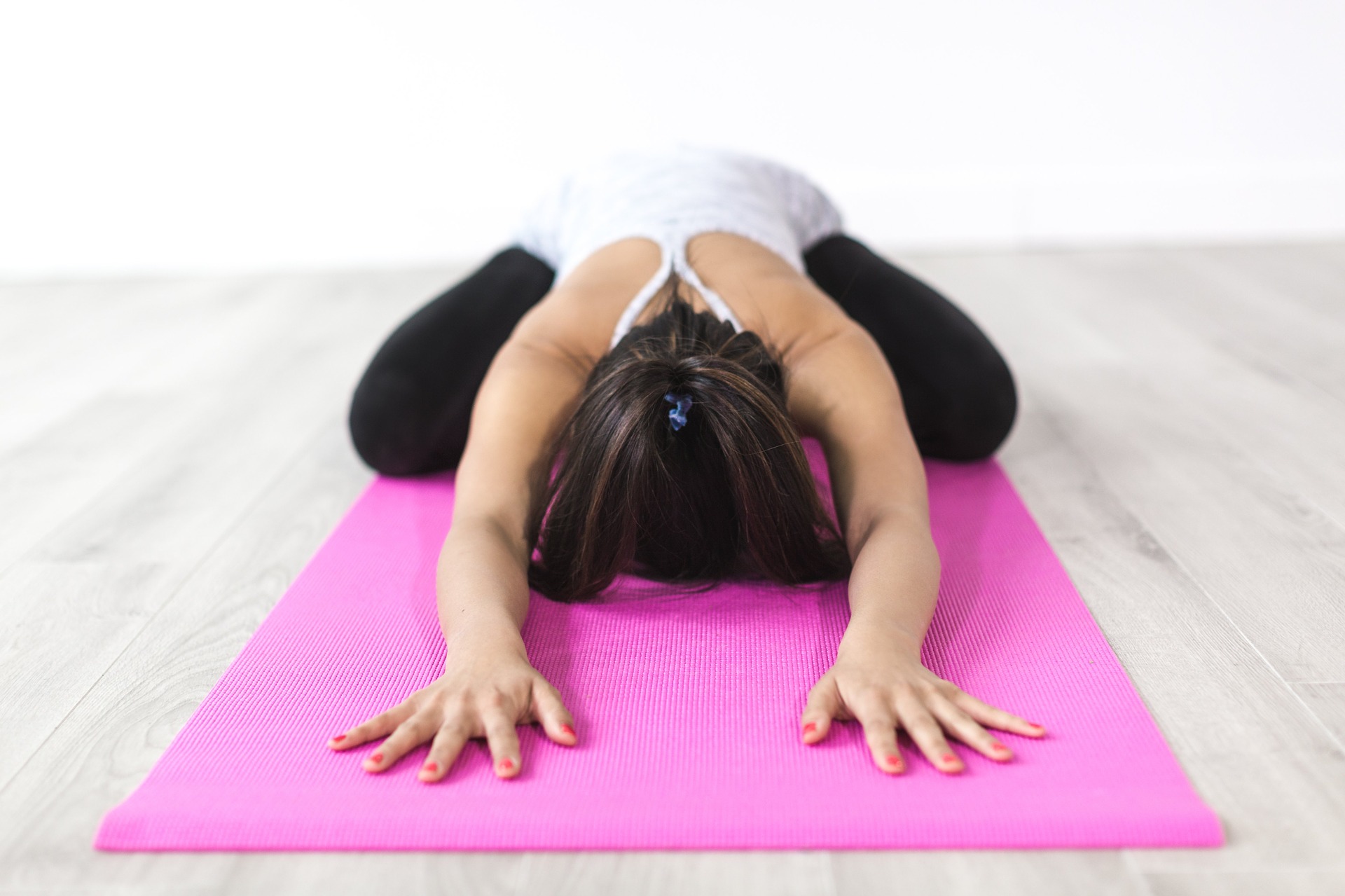
#3 Legs Up The Wall
And then for the last one, legs up the wall. I’ve mentioned this one as well in another article, right here.
Legs up the wall is amazing for all kinds of things. And actually, what Childs Pose and this one have in common is that they are both stimulating full relaxation.
Thus, I included these two positions because they are amazing to go into a full relaxed body and mind. Which is actually one of the main reasons that it’s you mind be experiencing some anxiety.
Of course, legs up the wall is great for many things as well. But here we are talking about anxiety.
And you’ll notice that the moment you’ll find yourself into a deep state of peace and quiet, that a lot of your anxiety-related symptoms will dissapear as well.
For more information about this asana, click here.
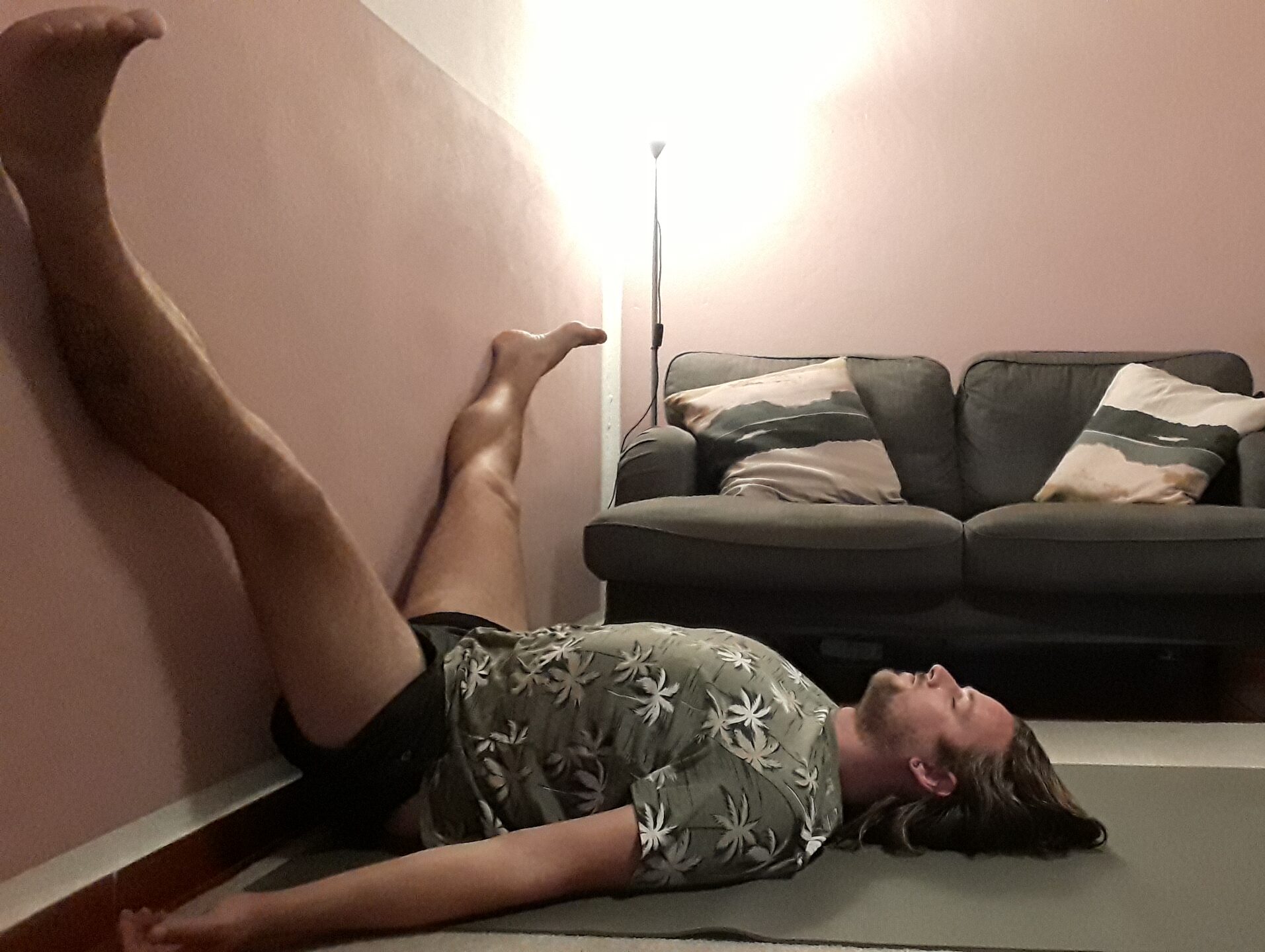
Breathing Technique to Relieve Anxiety
And as I promised before, there is also a breathing technique (Pranayama) that you’ll be able to do to relieve your anxiety!
It’s also a very simple one and it will bring your entire body back into balance.
And because you focus on your breath, this will give you a great advantage already.
By focusing on your breaths, you’ll already become more relaxed.
And by prolonging your inhales and exhales, your heart rate will also drop significantly. To a point where you will feel deep relaxation.
This technique is called Nadi Shodan, or Alternate Nostril Breathing.
And this is how it goes:
With your right hand put your middle finger and index finger in between your eyebrows.
The pinky and ring finger should be used to close the left nostril and the thumb to close the right nostril.
Start closing off the left nostril to begin. Start your inhalation through the right nostril.
When you’ve completed this, hold your breath and close the right nostril off and open the left one to exhale through here.
Inhale through the left nostril, close off and open the other one for the exhalation.
And continue this for about 5 minutes to begin.
After a while you can go on with this pranayama technique for about 30 minutes!
But start slow.
Here’s a video for you if you’d like to have see how it goes.

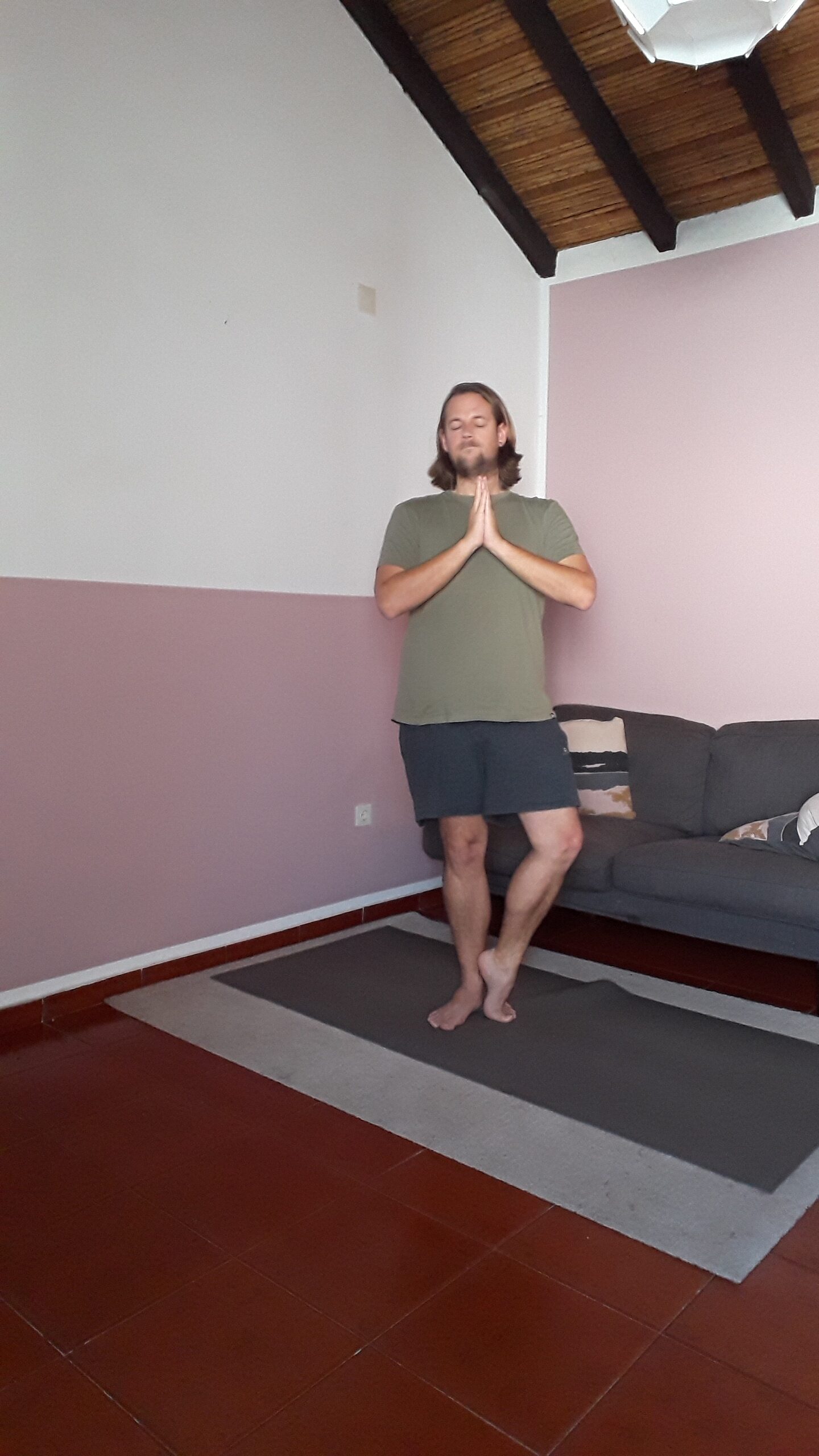

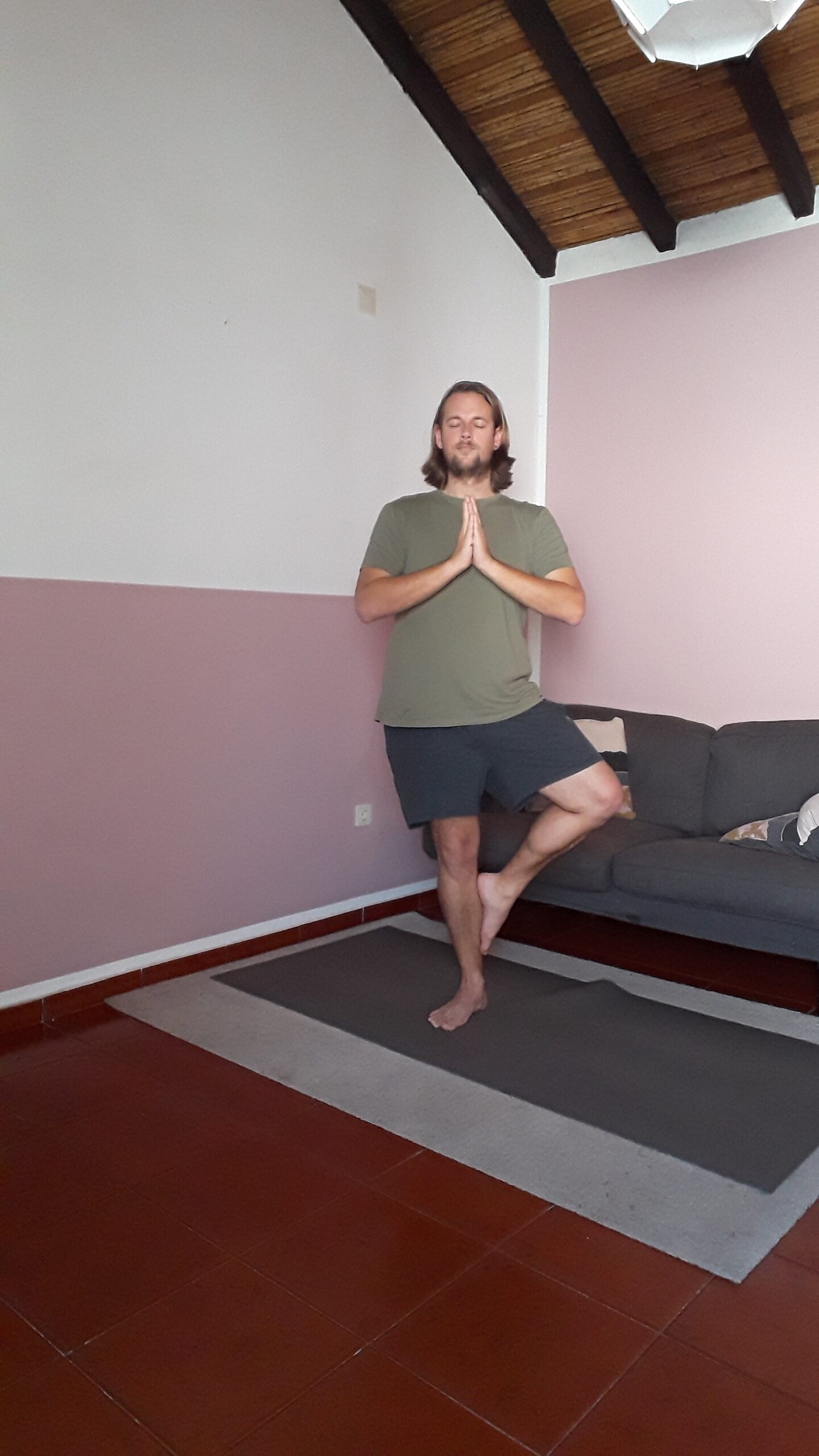
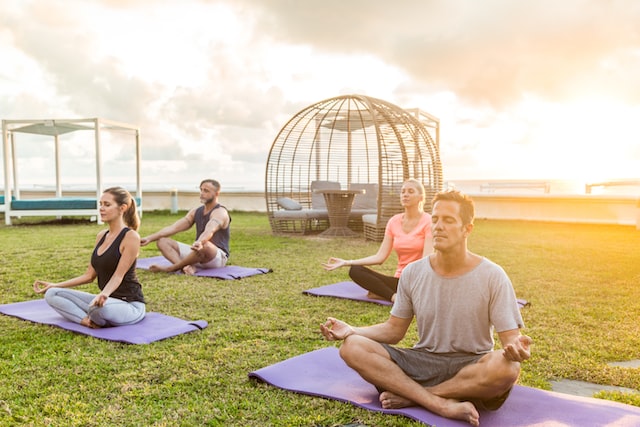

Hi Virendra
I just wanted to say thank you for the time and effort you have put in to this article. The content is great and has so much relevance to the current situation which we find ourselves with (COVID-19). Anxiety is something which i have experienced before and i think Yoga and meditation are great tools. The legs up the wall is a new technique on me, but one i will try out. What time of day would you say is best to do Yoga?
Thanks,
Joe
Hi Joe, thank you for having taken the time to read the article! The best time of day really depends on you. Any time is a good time to do yoga, you can read more about it in my article that I specifically wrote on this matter. If it comes down to doing yoga for anxiety, and specifically these positions that I’ve mentioned here: I’d do them in the evening to unwind a bit after a busy day.
Hope that answers your question!